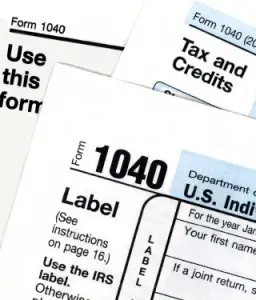In the previous two sections, the discussion was more national in scope as we discussed both The Fed and the GSE’s. Part Three is both national and local in scope as it touches on building codes and the impact of taxes.
- Part One – Mortgages and the GSE Guidelines
- Part Two – The Role of the Fed
- Part Three (here) – Congress, Taxes, Zoning and Building Codes
- Part Four – The Conclusion

The Mortgage Interest Deduction (MID), Capital Gains, Tax Abatement, Federal versus State Historic Tax Credits, Dodd-Frank Financial Reform Act, the Downtown Master Plan…all are governmental interjections (City, State and Federal) into the housing marketplace that impact how properties are taxed, built, sold, approved and inspected.
While the impact of the Fed and the GSE impact how properties are purchased, the tax code impacts how they are sold.
The tax code, which is modified pretty regularly, places different rates of taxation on different asset classes with the biggest difference being the definition of long and short term capital gains. An asset, held for a longer period of time is taxed at a rate lower than ones held for less time…which influences how an owner will behave. Consider the person who renovates homes for a living…purchasing and renovating a home creates the highest amount of income tax possible while renovating it, holding it for a few years and then selling it lowers the rate. The incentive is to either not buy the home or to minimally renovate it. Seems a little counter-intuitive to me.
Likewise, income levels also determine how and when an owner may deduct interest paid on a property. In 1986, when there was a massive overhaul of the tax code, the treatment of passive losses (interest, depreciation) were changed to disallow the sheltering of ordinary income making many real estate investments far less feasible for many high earning individuals.
Why does this matter?
Owning property simply for the purpose of tax reasons is a dangerous game, but much of what we do is influenced by taxes. As a good friend loves to point out, that which we need less of, tax heavily. That which we want more of, tax less. It is a very true statement.
The Federal Government, with the stroke of a pen, can dramatically alter an asset’s performance by simply changing a definition in the tax code. Treating passive income differently than active income had a massive impact on properties for investment properties and that one simple change turned many properties upside down. And even when the market is given ample notice that a change in the code is coming or a temporary change is nearing its end (Sunset Provision) as the date for the change draws near, more and more are forced to either sell or buy and prices can be affected. Understand this if you are in the investment arena.
In addition to the impact of taxes, there are numerous levels of interference from a multitude of agencies, many times with conflicting interests, making the process of building and developing harder than it should be. Each level of regulation placed on any industry causes unintended consequences.

Several ‘Betcha Didn’t Know’ Anecdotes –
- Historic Tax Credits are effectively doubled if you build an apartment building (for rent) as opposed to a condo property (for sale) and thus the 2000+ apartments built Downtown since 2010 with no new condominium development during the same time period
- Dodd-Frank largely prevents a seller from holding financing (and it also eliminated free checking, fyi…)
- FHA will not do a condo loan in a condo project with no rental restrictions. VA will not do a loan in a condo project with ANY rental restrictions
- The Uniform Residential Appraisal Report make no adjustment for green/LEED/other responsible building practices despite the government’s latest mandate to improve building performance ‘by 30%’
- The IRS ruled that contributions into a partnership for Tax Credit purposes are, in fact, taxable (that one absolutely befuddles me)
- The sign ordinance in the City of Richmond is directly at odds with the Department of Historic Resources (in many cases)
Why does this matter?
It matters because each layer of compliance and regulation, while intended for the greater good (I do actually believe that, for what it is worth), simply creates another impact on the market which typically increases the cost of buying, selling or building. Each increase in cost has a corresponding effect on demand and thus, pricing. While mandating a home be 30% more energy efficient sounds great, when a home will not appraise (and thus not be financeable), a builder is far less likely to build it.
Ultimately, an shrewd property investor is acutely aware of the tax code.
Part Four – The Conclusion – May Be Found Here…










